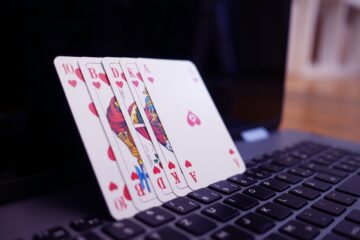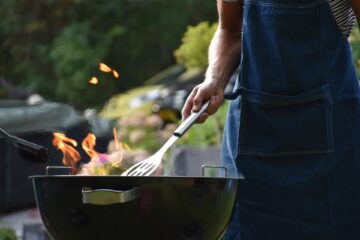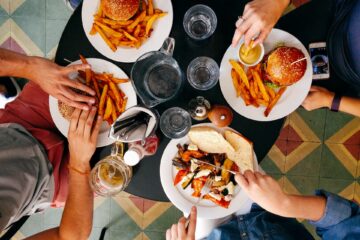If you are about to undergo tooth extraction or you already have, you are probably wondering if or why your diet has to change. If you don’t plan your meals according to the recommended diet, the affected area would not only become more painful, but it could also get infected. The good news is that, while there are a few restrictions, you still have a lot of delicious options to enjoy.
So, can I eat pancakes after tooth extraction? We will be discussing a few dos and don’ts for eating after tooth extraction. Follow this guide and your healing process will be as delicious as it is healthy.
Can I Eat Pancakes After Tooth Extraction?
Yes, you can eat pancakes a day or two after tooth extraction. (Yay!)
Patients are advised to avoid hard foods that could further hurt the affected area. Foods like pancakes, pasta, scrambled eggs, and jello are some soft foods that are recommended after tooth extraction. Acidic, sticky, crunchy, hard, alcoholic, carbonated, spicy, and thick grain foods should be avoided until the extraction area is healed.
Hard and crunchy foods can get stuck in your extraction area and make it very painful. Acidic foods can cause more pain and stinging, and carbonated drinks can cause a dry socket. You are also advised not to drink from a straw after tooth extraction because it could also cause a dry socket by ripping out your blood clots or stitches.
Patients are generally advised to have only liquids and foods like pudding and yogurt for the first 24 to 48 hours after tooth extraction. They can then move on to soft foods that require little to no chewing, for example, mashed potatoes, pancakes, and scrambled eggs. You can opt to overcook your food so they’re even softer or leave them in your mouth to get softened by your saliva. This would put very little stress on your extraction area and make healing easier.
You are also advised to chew away from the extraction area and towards the front of your mouth regardless of what you are eating. If you must eat hard or crunchy foods after tooth extraction, you can chew them with the other side of your mouth, keeping them away from the extraction area. With a healthy diet and minimal chewing, your recovery should be smooth.
The Importance of Following Dietary Restrictions
After tooth extraction, it is crucial to follow dietary restrictions to prevent complications such as infection, dry socket, and delayed healing. Your mouth will be more susceptible to bacteria, and eating certain foods can damage the surgical site and prolong recovery.
In particular, you should avoid hard, crunchy, and sticky foods that could dislodge the blood clot forming at the extraction site, which protects the bone and nerves underneath. Foods like nuts, popcorn, chips, and caramel can all pose a risk. You should also avoid spicy, acidic, and hot foods that can irritate the surgical site and cause pain or discomfort.
Instead, focus on consuming soft and lukewarm foods that are easy to chew and swallow without putting pressure on the extraction site. Soft foods like mashed potatoes, soups, and smoothies are typically safe to eat and provide the necessary nutrients for healing.
Following dietary restrictions may be challenging, but it is essential to promote healing and prevent complications. Depending on the type and location of the extraction, your dentist or oral surgeon may provide specific guidelines and a timeline for resuming normal eating habits. It’s crucial to follow these guidelines to minimize the risk of complications and ensure a smooth recovery.
Factors to Consider
Several factors can influence when you can resume eating certain foods after tooth extraction. Your individual circumstances, such as the type and location of the extraction, the severity of the procedure, and your overall health, can all play a role.
The type of extraction refers to whether the tooth was simple or surgical. Simple extractions involve the removal of a visible tooth, while surgical extractions require an incision in the gum tissue to remove a tooth that has not yet erupted or is broken off at the gumline. In general, surgical extractions require more healing time and may involve more dietary restrictions than simple extractions.
The location of the extraction can also influence when you can resume eating certain foods. For example, extractions at the back of the mouth may require more healing time due to the proximity to the jawbone and nerves.
The severity of the procedure is another factor to consider. If the extraction was complicated, such as if the tooth was impacted or the procedure took longer than usual, you may need to follow more stringent dietary restrictions and allow for a longer healing time.
Your overall health can also affect your recovery process. If you have underlying medical conditions or take certain medications, it may take longer for your body to heal. In these cases, your dentist or oral surgeon may recommend additional precautions to prevent complications.
It’s crucial to talk to your dentist or oral surgeon about your specific case to determine when you can resume eating certain foods. They can provide personalized guidance based on your individual circumstances and monitor your recovery to ensure a smooth healing process.
Soft Foods vs. Solid Foods
After tooth extraction, it is essential to start with soft foods and gradually work your way up to solid foods. Soft foods are easier to chew and swallow, minimizing pressure on the surgical site and reducing the risk of complications.
Soft foods typically include mashed or pureed foods, soups, smoothies, and yogurt. These foods are gentle on the mouth, easy to swallow, and provide essential nutrients for healing. Soft foods are also helpful for preventing dehydration, which is crucial for optimal recovery.
Solid foods, on the other hand, require more chewing and can put pressure on the surgical site, causing discomfort and delaying healing. Solid foods to avoid include hard or crunchy foods, such as nuts, chips, and crackers, and sticky foods like caramel or gummy candy.
As your mouth heals, you can gradually introduce more solid foods into your diet. It’s important to start with soft solid foods like scrambled eggs or cooked vegetables before transitioning to harder foods. Avoid using the side of your mouth where the extraction occurred to chew, and take small bites and chew slowly.
It’s essential to follow your dentist or oral surgeon’s dietary recommendations, which may vary depending on the type and location of the extraction and the severity of the procedure. In general, you should avoid solid foods for the first few days after tooth extraction and gradually transition to solid foods as your mouth heals.
By following a soft food diet, you can reduce the risk of complications and promote optimal healing after tooth extraction.
What Are Pancakes?
Pancakes are a popular breakfast food made from a simple batter of flour, eggs, milk, and butter. The batter is poured onto a griddle or frying pan and cooked until golden brown on both sides. Pancakes can be served with a variety of toppings, including butter, syrup, whipped cream, fruit, or chocolate chips.
One of the benefits of pancakes is that they have a soft, fluffy texture that makes them easy to chew and swallow. This texture is ideal for someone recovering from tooth extraction since hard or crunchy foods could damage the surgical site and prolong recovery time.
Pancakes are also a good source of carbohydrates, which provide energy for the body. Carbohydrates are an essential nutrient that is crucial for optimal healing after tooth extraction. Additionally, the eggs in the batter provide protein, which is necessary for repairing and rebuilding tissues.
While pancakes can be a good food choice after tooth extraction, it’s important to avoid toppings that could be too hard or sticky. For example, nuts or hard candies could damage the surgical site, and sticky toppings like caramel or peanut butter could dislodge the blood clot and cause a dry socket.
When Can You Eat Pancakes After Tooth Extraction?
The timing for when you can eat pancakes after tooth extraction can vary depending on your individual case. In general, it’s recommended to wait at least a few days after the procedure before consuming solid foods like pancakes. This allows time for the blood clot to form and the surgical site to start healing.
It’s important to follow your dentist or oral surgeon’s instructions on when you can resume eating solid foods. In some cases, they may recommend waiting longer than a few days before eating pancakes or other solid foods.
You may be able to start eating pancakes once your mouth has started to heal, and the extraction site is no longer painful or swollen. You should start by cutting the pancakes into small pieces and taking small bites, chewing slowly and carefully. It’s also important to avoid hot or cold foods that could irritate the surgical site.
If you experience any pain or discomfort while eating pancakes, stop immediately and wait a few more days before trying again. It’s important to be patient and listen to your body to avoid any complications.
It’s also important to avoid adding any hard or crunchy toppings to your pancakes, such as nuts or candy. Instead, opt for soft toppings like fruit, whipped cream, or a soft poached egg.
In summary, the timing for when you can eat pancakes after tooth extraction can vary depending on your individual case. It’s important to follow your dentist or oral surgeon’s instructions and start by cutting the pancakes into small pieces and taking small bites. Be patient and listen to your body to avoid any complications.
Tips for Eating Pancakes After Tooth Extraction
If you’re planning to eat pancakes after tooth extraction, there are several tips you should follow to ensure a safe and comfortable eating experience. Here are some tips to keep in mind:
- Wait until your dentist or oral surgeon gives you clearance: Before eating any solid foods like pancakes, make sure you have received clearance from your dentist or oral surgeon. They will let you know when it is safe to eat solid foods and will provide you with specific instructions based on your individual case.
- Cut the pancakes into small pieces: To make it easier to chew and swallow, cut the pancakes into small pieces. This will help reduce pressure on the extraction site and minimize the risk of complications.
- Take small bites and chew slowly: When eating pancakes after tooth extraction, take small bites and chew slowly. This will also help reduce pressure on the extraction site and make it easier to swallow.
- Avoid adding hard or crunchy toppings: While soft toppings like fruit and whipped cream are generally safe to eat after tooth extraction, hard or crunchy toppings can be harmful. Avoid adding nuts, candy, or other hard or crunchy toppings to your pancakes.
- Opt for soft toppings: Instead of hard or crunchy toppings, opt for soft toppings like fruit, whipped cream, or a soft poached egg. These toppings are gentle on the mouth and won’t cause any additional pressure on the extraction site.
- Avoid hot or cold foods: Hot or cold foods can be irritating to the extraction site and cause discomfort. Stick to lukewarm or room temperature foods, including your pancakes.
- Be patient: Even if you have received clearance from your dentist or oral surgeon to eat solid foods like pancakes, be patient and listen to your body. If you experience any pain or discomfort while eating, stop immediately and wait a few more days before trying again.
By following these tips, you can enjoy pancakes after tooth extraction safely and comfortably. Remember to be patient and take it slow, and always follow your dentist or oral surgeon’s instructions.
Can I Eat Pancakes with Syrup After Tooth Extraction?
Yes, you can eat pancakes with syrup after tooth extraction. As earlier stated, pancakes are good to eat a day or two after tooth extraction. They are soft, fluffy, and require minimal chewing. You can also leave them in your mouth for a while before chewing so they can get softened with the help of your saliva. Syrup or honey is also okay to eat after tooth extraction. You also want to be careful with the quantity.
When Can I Eat Pancakes After Tooth Extraction?
You can eat pancakes a day or two after tooth extraction. This might not be the same for everyone, but if you feel like you can, then you can try having it a day after your extraction. Otherwise, you can wait one or two more days just to avoid any stress on the extraction area.
Can I Eat Cake 2 Days After Tooth Extraction?
Yes, you can eat cake 2 days after tooth extraction. Cakes, pancakes, hummus, scrambled eggs, ramen, and pudding are some foods you can have at least a day after tooth extraction. They are soft enough to reduce the tension on the extraction area but are also good enough for meals for the day. It is important to stick to soft foods like these and avoid hard, crunchy, or sticky foods to improve and assist your healing process.
Keep in mind that you should chew away from the extraction area and avoid having too much sugar with or without tooth extraction.
Read also: Can You Eat a Burger with Braces?
Can I eat waffles after tooth extraction?
Whether or not you can eat waffles after tooth extraction will depend on several factors. In general, it is recommended to wait at least a few days after the procedure before consuming solid foods like waffles. This allows time for the blood clot to form and the surgical site to start healing.
If you have received clearance from your dentist or oral surgeon to start eating solid foods, you may be able to eat waffles as long as you follow the same precautions as with pancakes. Cut the waffles into small pieces and take small bites, chewing slowly and carefully. Avoid adding hard or crunchy toppings like nuts or candy, and stick to soft toppings like fruit, whipped cream, or a soft poached egg.
As with any solid food after tooth extraction, be sure to listen to your body and stop eating immediately if you experience any pain or discomfort. If you have any concerns or questions about your specific case, it is always best to consult with your dentist or oral surgeon for personalized guidance.
When Can You Go Back to Eating Normally After A Tooth Extraction?
You can go back to your normal diet 3 weeks after tooth extraction, but this is dependent on the person and the extraction process. People heal differently – some take longer while others don’t. Also, if you had to have stitches during the extraction, then your healing might take longer. Otherwise, you would heal faster. Basically, if you feel like you can eat normally, then you should.
The first two days after your tooth extraction are crucial to your healing, it is best to stick to liquids and very light foods until you feel like you can eat something else. You can have soft foods like pancakes and pudding after 48 hours and typically up to a week. If you feel better before that, you can move to medium foods, making the transition to hard foods easier on you. After two to three weeks, you should be getting ready to move to harder foods that require more chewing.
If you still need more time to heal, that is perfectly fine. It is important to not rush your healing, as this might only hurt you more and make it longer. It is also important to note that if you don’t use your jaw properly by chewing well for three days, it might be more difficult to open wide at your next exam. Eat healthy to boost your healing but remember to chew away from the extraction area and always remember to clean up properly.
Read also: What to Serve with Potato Dauphinoise?
Things to Eat and Avoid After Tooth Extraction
Some of the foods you can eat for the first two days after tooth extraction are:
- Liquids (except alcoholic, carbonated, or acidic liquids)
- Yogurt
- Jello
- Hummus
- Applesauce
- Pudding
- Ice cream
- Gelatin
- Smoothies
- Soup or broth
Some of the soft foods you can eat after 48 hours of your tooth extraction are:
- Pancakes
- Mashed potatoes
- Cake
- Soft scrambled eggs
- Pasta
- Ramen
- Mac and cheese
- Avocado
- Beans
- Oatmeal
- Squash
- Sliced and cut fish or meats
- Sweet potatoes
- Soft sandwiches
- Soft rice
- Steamed veggies
- Sour cream
- Soufflé
- Sherbet
- Soft bread
- Cheese
- Risotto
- Polenta
- Mousse
- Melons
- Mangoes
- Ground chicken/beef/turkey
- Doughnuts
- Custard
- Bananas
- Baby food
- Fish
Some foods you should avoid after tooth extraction are:
- Chips
- Cookies
- Nuts
- Apples
- Pears
- Grains and seeds
- Spicy foods
- Chewy or sticky foods
- Alcoholic, carbonated or acidic drinks
- Hot or icy cold foods
- Popcorn
- Bacon
- Waffles
- Crackers
- Tomatoes or tomato sauce
- Orange juice
- Cracked pepper
- OTC mouth wash
Conclusion
The importance of following your doctor’s orders cannot be overstated. In the case of tooth extraction, disobeying orders will lead to pain, swelling, discomfort, and bleeding. Stick to soft foods for the first 2 weeks after tooth extraction, avoid using straws, rinse and clean your mouth properly after eating to avoid remnants in the extraction area, use an icepack to soothe the pain, and avoid acidic, alcoholic, or carbonated foods. You can take the easy way or the hard way to your recovery – it’s your choice.




